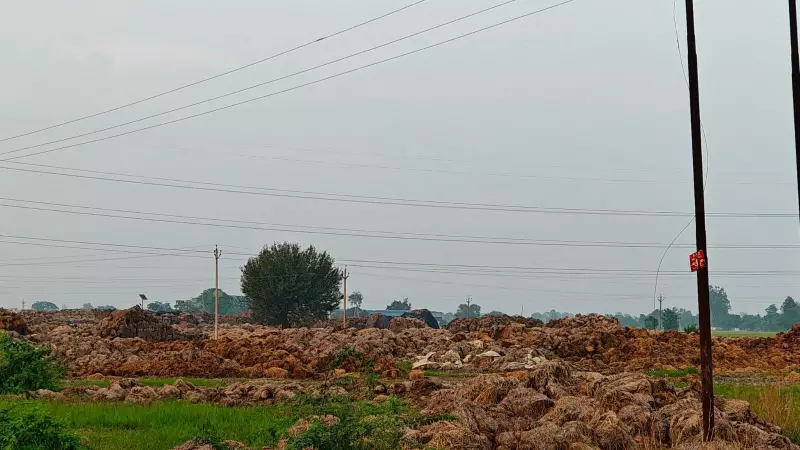
In a bizarre economic twist, Punjab is grappling with a sand paradox that has left experts scratching their heads. While vast quantities of sand lie unused across agricultural fields, illegal mining operations continue to ravage the state's riverbeds, creating an environmental crisis amid a construction slowdown.
The Field Glut: Mountains of Unused Sand
Across Punjab's countryside, an unusual sight has become increasingly common: massive mounds of sand accumulating in fields and open spaces. These stockpiles, legally mined and transported, now sit idle as demand from the construction sector has plummeted dramatically.
The numbers tell a startling story:
- Authorized mine owners report selling only 10-20% of their stocked material
- Major stockpiles have accumulated in districts including Rupnagar, SAS Nagar, and Fatehgarh Sahib
- Daily sales have dropped from hundreds of trolleys to mere dozens
The Riverbed Reality: Illegal Mining Thrives
Despite the surplus in fields, illegal miners continue to extract sand from riverbeds across Punjab. The Sutlej, Beas, and other rivers bear the scars of this unauthorized activity, with environmental costs mounting daily.
"It's cheaper to mine illegally than to transport legal sand over long distances," explains a industry insider who requested anonymity. "The economics favor the lawbreakers, creating this strange situation where we have both surplus and scarcity."
Construction Crisis Drives the Paradox
The root cause of this unusual situation lies in Punjab's construction industry, which has hit a significant slowdown. Multiple factors have contributed to this downturn:
- High interest rates making home loans less affordable
- Economic uncertainty delaying new projects
- Completed housing inventory remaining unsold
- Infrastructure projects slowing pace
As construction activity dwindles, the demand for sand—a crucial building material—has correspondingly decreased, leaving legitimate suppliers with growing inventories.
Environmental Impact and Economic Consequences
The situation creates a double-edged sword for Punjab. While legal operators face financial strain from unsold inventory, the continued illegal mining poses severe environmental threats:
- Riverbed degradation affecting water tables
- Ecosystem damage to aquatic life
- Increased flood risks due to altered river courses
- Loss of government revenue from illegal operations
The price disparity tells the tale: Legal sand costs significantly more due to transportation and licensing fees, while illegally mined material can be sold cheaper despite the environmental cost.
Looking Ahead: Solutions to the Sand Crisis
Industry experts suggest several approaches to resolve Punjab's sand paradox:
Government intervention could help streamline the legal sand supply chain, reducing costs for legitimate operators. Simultaneously, stronger enforcement against illegal mining is crucial to protect river ecosystems.
As one industry representative noted, "We need a balanced approach that supports legal mining while cracking down on illegal operations. The current situation benefits nobody in the long term—not the environment, not the economy, and certainly not the people of Punjab."
The resolution of this paradox will require coordinated efforts between government agencies, industry stakeholders, and environmental groups to create a sustainable solution for Punjab's sand economy.





